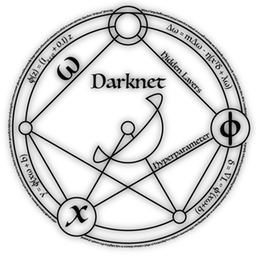darknet
所属分类:其他
开发工具:C/C++
文件大小:7818KB
下载次数:1
上传日期:2020-01-13 17:24:28
上 传 者:
pcb9382
说明: 采用C语言实现Darknet53的yolov3的框架
(A framework for implementing yolov3 of Darknet53 in C language)
文件列表:
.circleci (0, 2019-09-28)
.circleci\config.yml (662, 2019-09-28)
.travis.yml (9845, 2019-09-28)
3rdparty (0, 2019-09-28)
3rdparty\pthreads (0, 2019-09-28)
3rdparty\pthreads\bin (0, 2019-09-28)
3rdparty\pthreads\bin\pthreadGC2.dll (185976, 2019-09-28)
3rdparty\pthreads\bin\pthreadVC2.dll (82944, 2019-09-28)
3rdparty\pthreads\include (0, 2019-09-28)
3rdparty\pthreads\include\pthread.h (42499, 2019-09-28)
3rdparty\pthreads\include\sched.h (4995, 2019-09-28)
3rdparty\pthreads\include\semaphore.h (4563, 2019-09-28)
3rdparty\pthreads\lib (0, 2019-09-28)
3rdparty\pthreads\lib\libpthreadGC2.a (93692, 2019-09-28)
3rdparty\pthreads\lib\pthreadVC2.lib (29738, 2019-09-28)
3rdparty\stb (0, 2019-09-28)
3rdparty\stb\include (0, 2019-09-28)
3rdparty\stb\include\stb_image.h (250861, 2019-09-28)
3rdparty\stb\include\stb_image_write.h (60006, 2019-09-28)
CMakeLists.txt (20019, 2019-09-28)
DarknetConfig.cmake.in (1363, 2019-09-28)
LICENSE (515, 2019-09-28)
Makefile (4992, 2019-09-28)
appveyor.yml (5851, 2019-09-28)
build.ps1 (8265, 2019-09-28)
build.sh (2044, 2019-09-28)
build (0, 2019-09-28)
build\darknet (0, 2019-09-28)
build\darknet\YoloWrapper.cs (3131, 2019-09-28)
build\darknet\darknet.sln (1283, 2019-09-28)
build\darknet\darknet.vcxproj (17136, 2019-09-28)
build\darknet\darknet_no_gpu.sln (1281, 2019-09-28)
build\darknet\darknet_no_gpu.vcxproj (17281, 2019-09-28)
build\darknet\x64 (0, 2019-09-28)
build\darknet\x64\backup (0, 2019-09-28)
... ...
# Yolo-v3 and Yolo-v2 for Windows and Linux
### (neural network for object detection) - Tensor Cores can be used on [Linux](https://github.com/AlexeyAB/darknet#how-to-compile-on-linux) and [Windows](https://github.com/AlexeyAB/darknet#how-to-compile-on-windows-using-vcpkg)
More details: http://pjreddie.com/darknet/yolo/
[](https://circleci.com/gh/AlexeyAB/darknet)
[](https://travis-ci.org/AlexeyAB/darknet)
[](https://ci.appveyor.com/project/AlexeyAB/darknet/branch/master)
[](https://github.com/AlexeyAB/darknet/graphs/contributors)
[](https://github.com/AlexeyAB/darknet/blob/master/LICENSE)
* [Requirements (and how to install dependecies)](#requirements)
* [Pre-trained models](#pre-trained-models)
* [Explanations in issues](https://github.com/AlexeyAB/darknet/issues?q=is%3Aopen+is%3Aissue+label%3AExplanations)
* [Yolo v3 in other frameworks (TensorRT, TensorFlow, PyTorch, OpenVINO, OpenCV-dnn,...)](#yolo-v3-in-other-frameworks)
* [Datasets](#datasets)
0. [Improvements in this repository](#improvements-in-this-repository)
1. [How to use](#how-to-use-on-the-command-line)
2. [How to compile on Linux](#how-to-compile-on-linux)
3. How to compile on Windows
* [Using vcpkg](#how-to-compile-on-windows-using-vcpkg)
* [Legacy way](#how-to-compile-on-windows-legacy-way)
4. [How to train (Pascal VOC Data)](#how-to-train-pascal-voc-data)
5. [How to train with multi-GPU:](#how-to-train-with-multi-gpu)
6. [How to train (to detect your custom objects)](#how-to-train-to-detect-your-custom-objects)
7. [How to train tiny-yolo (to detect your custom objects)](#how-to-train-tiny-yolo-to-detect-your-custom-objects)
8. [When should I stop training](#when-should-i-stop-training)
9. [How to calculate mAP on PascalVOC 2007](#how-to-calculate-map-on-pascalvoc-2007)
10. [How to improve object detection](#how-to-improve-object-detection)
11. [How to mark bounded boxes of objects and create annotation files](#how-to-mark-bounded-boxes-of-objects-and-create-annotation-files)
12. [How to use Yolo as DLL and SO libraries](#how-to-use-yolo-as-dll-and-so-libraries)
|  |  mAP@0.5 (AP50) https://pjreddie.com/media/files/papers/YOLOv3.pdf |
|---|---|
* YOLOv3-spp better than YOLOv3 - mAP = 60.6%, FPS = 20: https://pjreddie.com/darknet/yolo/
* Yolo v3 source chart for the RetinaNet on MS COCO got from Table 1 (e): https://arxiv.org/pdf/1708.02002.pdf
* Yolo v2 on Pascal VOC 2007: https://hsto.org/files/a24/21e/068/a2421e0689fb43f08584de9d44c2215f.jpg
* Yolo v2 on Pascal VOC 2012 (comp4): https://hsto.org/files/3a6/fdf/b53/3a6fdfb533f34cee9b52bdd9bb0b19d9.jpg
### Requirements
* Windows or Linux
* **CMake >= 3.8** for modern CUDA support: https://cmake.org/download/
* **CUDA 10.0**: https://developer.nvidia.com/cuda-toolkit-archive (on Linux do [Post-installation Actions](https://docs.nvidia.com/cuda/cuda-installation-guide-linux/index.html#post-installation-actions))
* **OpenCV >= 2.4**: use your preferred package manager (brew, apt), build from source using [vcpkg](https://github.com/Microsoft/vcpkg) or download from [OpenCV official site](https://opencv.org/releases.html) (on Windows set system variable `OpenCV_DIR` = `C:\opencv\build` - where are the `include` and `x***` folders [image](https://user-images.githubusercontent.com/409***85/53249516-5130f480-36c9-11e9-8238-a6e82e48c6f2.png))
* **cuDNN >= 7.0 for CUDA 10.0** https://developer.nvidia.com/rdp/cudnn-archive (on **Linux** copy `cudnn.h`,`libcudnn.so`... as desribed here https://docs.nvidia.com/deeplearning/sdk/cudnn-install/index.html#installlinux-tar , on **Windows** copy `cudnn.h`,`cudnn***_7.dll`, `cudnn***_7.lib` as desribed here https://docs.nvidia.com/deeplearning/sdk/cudnn-install/index.html#installwindows )
* **GPU with CC >= 3.0**: https://en.wikipedia.org/wiki/CUDA#GPUs_supported
* on Linux **GCC or Clang**, on Windows **MSVC 2015/2017/2019** https://visualstudio.microsoft.com/thank-you-downloading-visual-studio/?sku=Community
Compiling on **Windows** by using `Cmake-GUI` as on this [**IMAGE**](https://user-images.githubusercontent.com/409***85/55107892-6becf380-50e3-11e9-9a0a-556a943c429a.png): Configure -> Optional platform for generator (Set: x***) -> Finish -> Generate -> Open Project -> x*** & Release -> Build -> Build solution
Compiling on **Linux** by using command `make` (or alternative way by using command: `cmake . && make` )
#### Pre-trained models
There are weights-file for different cfg-files (smaller size -> faster speed & lower accuracy:
* `yolov3-openimages.cfg` (247 MB COCO **Yolo v3**) - requires 4 GB GPU-RAM: https://pjreddie.com/media/files/yolov3-openimages.weights
* `yolov3-spp.cfg` (240 MB COCO **Yolo v3**) - requires 4 GB GPU-RAM: https://pjreddie.com/media/files/yolov3-spp.weights
* `yolov3.cfg` (236 MB COCO **Yolo v3**) - requires 4 GB GPU-RAM: https://pjreddie.com/media/files/yolov3.weights
* `yolov3-tiny.cfg` (34 MB COCO **Yolo v3 tiny**) - requires 1 GB GPU-RAM: https://pjreddie.com/media/files/yolov3-tiny.weights
* `enet-coco.cfg` (EfficientNetb0-Yolo- 45.5% mAP@0.5 - 3.7 BFlops) [enetb0-coco_final.weights](https://drive.google.com/file/d/1FlHeQjWEQVJt0ay1PVsiuuMzmtNyv36m/view) and `yolov3-tiny-prn.cfg` (33.1% mAP@0.5 - 3.5 BFlops - [more](https://github.com/WongKinYiu/PartialResidualNetworks))
CLICK ME - Yolo v2 models
* `yolov2.cfg` (194 MB COCO Yolo v2) - requires 4 GB GPU-RAM: https://pjreddie.com/media/files/yolov2.weights
* `yolo-voc.cfg` (194 MB VOC Yolo v2) - requires 4 GB GPU-RAM: http://pjreddie.com/media/files/yolo-voc.weights
* `yolov2-tiny.cfg` (43 MB COCO Yolo v2) - requires 1 GB GPU-RAM: https://pjreddie.com/media/files/yolov2-tiny.weights
* `yolov2-tiny-voc.cfg` (60 MB VOC Yolo v2) - requires 1 GB GPU-RAM: http://pjreddie.com/media/files/yolov2-tiny-voc.weights
* `yolo9000.cfg` (186 MB Yolo9000-model) - requires 4 GB GPU-RAM: http://pjreddie.com/media/files/yolo9000.weights
近期下载者:
相关文件:
收藏者: